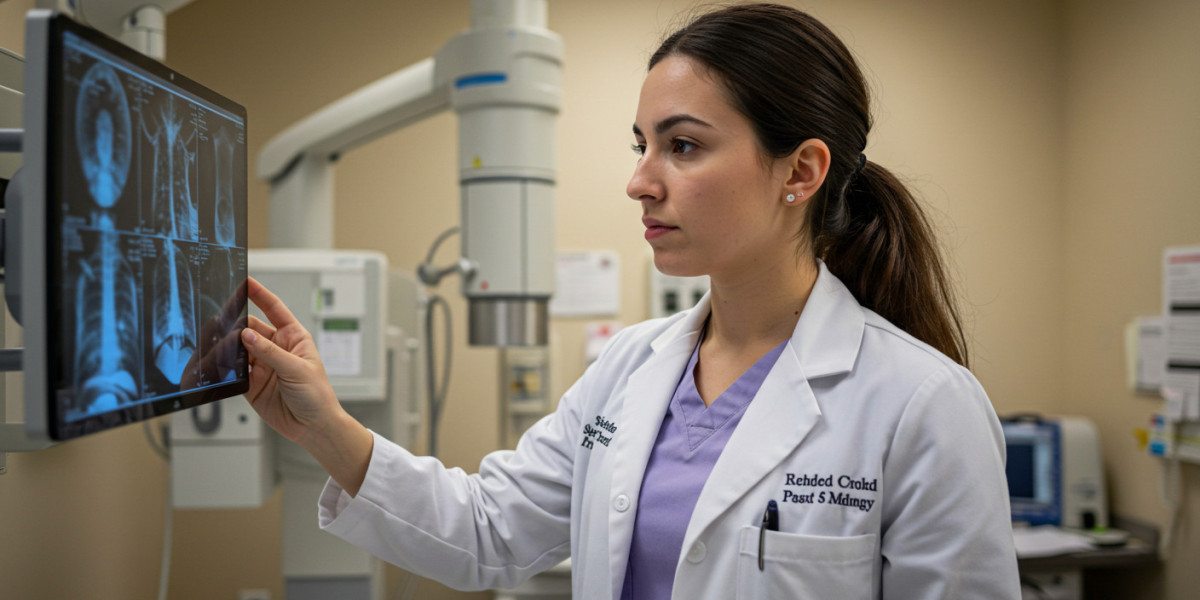In a large Toronto hospital, the day for an X-ray technologist starts early. Technologists usually arrive before 7:00 a.m. They begin by checking their imaging equipment and reviewing the day's schedule. Patients come in with many different needs, from emergency cases to planned procedures. Each person is treated with care, and patient comfort always comes first.
Before patients arrive, technologists make sure that safety measures are ready. This includes checking that lead aprons and shielding tools are clean and nearby. They also confirm imaging protocols for each area of the body. Clear images help doctors make better decisions, so getting them right the first time matters.
Working with Emergency Patients
The emergency department is often busy. X-ray technologists must work fast and safely. Some patients arrive with broken bones, while others need chest images to help diagnose lung infections. Working in emergencies means making fast decisions and keeping calm.
Technologists work closely with nurses and diagnostic imaging technologists. Everyone works together to get the best results. Sometimes the team has to image patients who are in pain or cannot move easily. In these cases, the technologist uses creative ways to get the right angle without hurting the patient further.
Scheduled Imaging and Patient Communication
Later in the day, technologists move on to scheduled exams. These include bone, chest, and abdominal X-rays. Each test has a different purpose. Some patients are nervous, especially if it's their first time. X-ray technologists help by explaining the process in simple terms.
They guide patients through each step, making sure they stay in the right position. Good communication helps patients stay calm and helps produce better images. It also builds trust between the patient and healthcare staff. In a city as diverse as Toronto, many technologists speak more than one language or use interpreters when needed.
Working with Mobile Imaging
Hospitals are large and often crowded. Some patients cannot leave their rooms due to their health. In these cases, technologists use mobile X-ray machines. These machines are pushed to the bedside and used right there.
Mobile imaging is common in the intensive care unit and surgical wards. It takes skill to use this equipment properly in small or busy spaces. Technologists must work with care to avoid disturbing other patients or staff. At the same time, they must follow safety rules for everyone in the room.
Afternoon Routines and Teamwork
As the afternoon continues, technologists often work with other departments. They may assist in operating rooms where real-time imaging is needed. During surgeries, the technologist focuses on capturing clear images quickly.
Collaboration is a key part of the job. X-ray technologists often talk with doctors, nurses, and other diagnostic imaging technologists. They share notes about patient needs or changes in plans. Each person’s work adds to the quality of patient care.
Equipment Care and Image Processing
When not working with patients, technologists handle equipment checks and digital image processing. Images are stored in hospital databases and must be labeled correctly. Accuracy matters because doctors rely on these images.
Technologists also report when machines need service. Keeping machines in good shape helps reduce delays. They also keep records for patient files. These files must follow hospital and privacy rules.
Challenges Faced During the Day
Like any hospital job, working as an X-ray technologist has challenges. Busy shifts, last-minute changes, or patient emergencies can add stress. But good teamwork and clear planning help the day go smoothly.
Technologists must stand for long periods and sometimes help move patients. They use safety gear to protect themselves from repeated exposure. Even when it’s hard, most technologists say the work is rewarding.
Balancing Speed and Accuracy
Speed is important in a hospital, but accuracy cannot be rushed. An unclear X-ray can delay diagnosis and treatment. Technologists learn how to work quickly without losing image quality.
They also take time to double-check patient names, ID numbers, and imaging orders. Mistakes can cause confusion or delay. With practice, technologists get better at spotting issues before they become problems.
Patient-Centred Work Culture
Every patient is different. Some may be children, others may be elderly or in pain. Technologists use patience and kindness to meet each person’s needs. They also respect people’s privacy and dignity.
The work is fast, but it still allows time for empathy. Most technologists take pride in making someone’s visit a little easier. In Canadian hospitals, this patient-first approach is part of the culture.
Continuous Learning and Training
Healthcare is always changing. New machines, new safety rules, and better imaging methods mean technologists keep learning. Most X-ray technologists attend workshops or training sessions every year.
Some pursue certifications with the Canadian Association of Medical Radiation Technologists (CAMRT). Others move into different roles, like CT or MRI imaging. Staying current helps technologists grow and stay confident in their skills.
Career Outlook and Growth Opportunities
Across Canada, the demand for imaging professionals continues to rise. Hospitals and clinics are hiring more trained staff, especially in large cities like Toronto. With the population growing and aging, imaging services are needed more than ever.
Many new graduates start in hospitals and later explore private clinics or teaching roles. Some even work in research or assist in developing new imaging systems. There’s room to grow for those who stay curious and want to keep improving.
If you're looking for X-ray tech jobs in Toronto, this kind of day-to-day experience is what you can expect.
Final Thoughts on the Technologist's Role
Being an X-ray technologist is both physical and mental work. You must think clearly, work safely, and be kind all day. No two days are the same.
In large hospitals, every image matters. Technologists play a big part in helping doctors find answers and patients feel better. They work behind the scenes but make a big impact on care.
Whether it's in an emergency room or at a patient’s bedside, X-ray technologists are trusted team members. They bring skill, speed, and heart to every shift.








